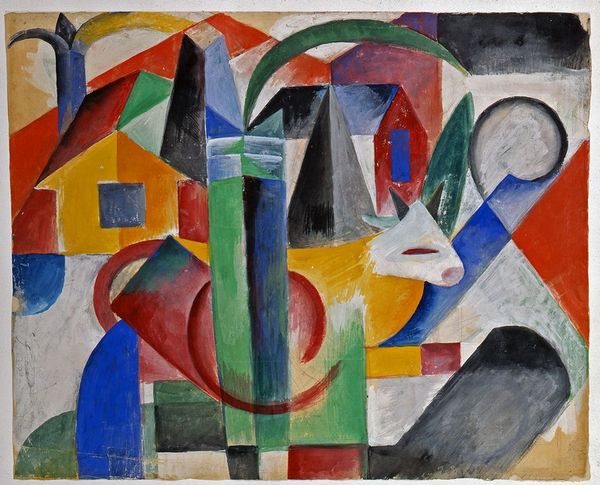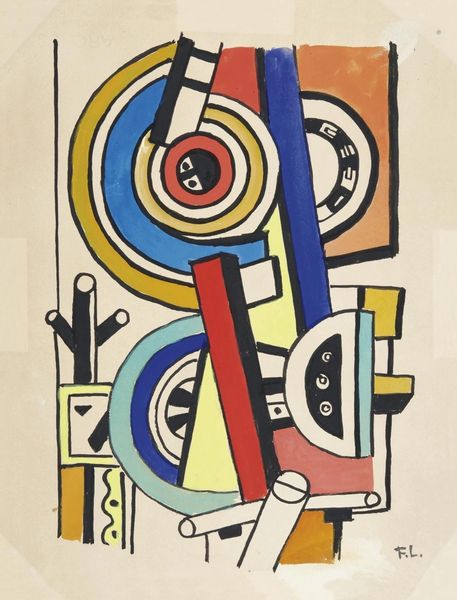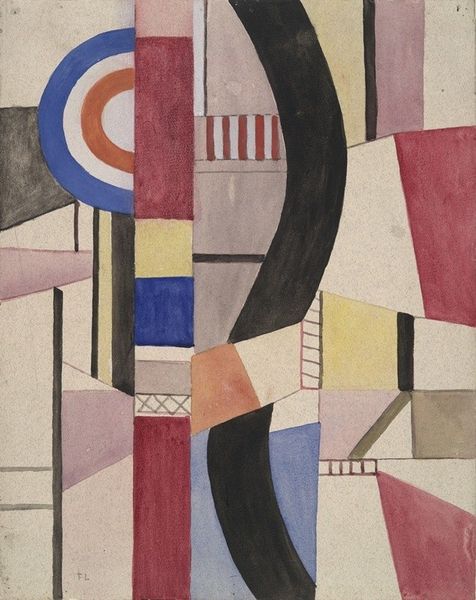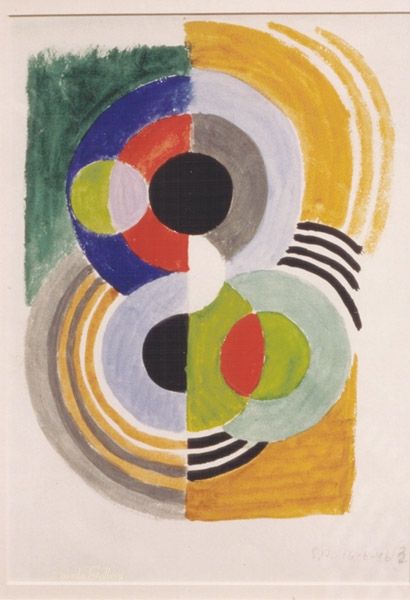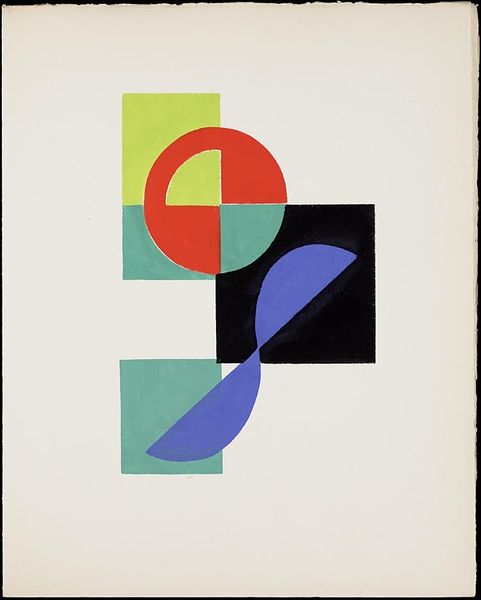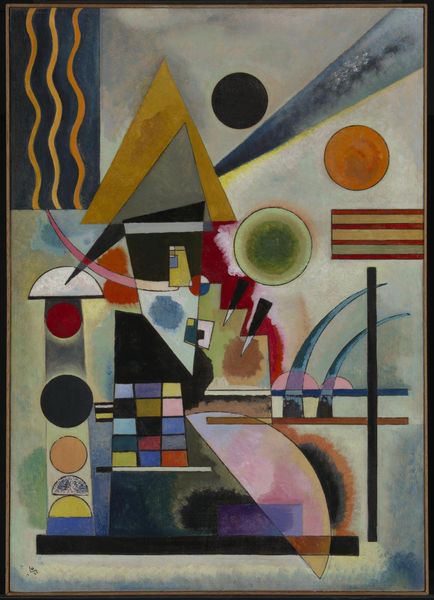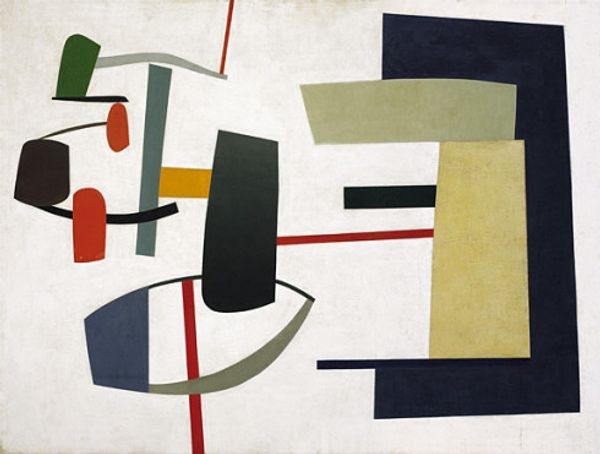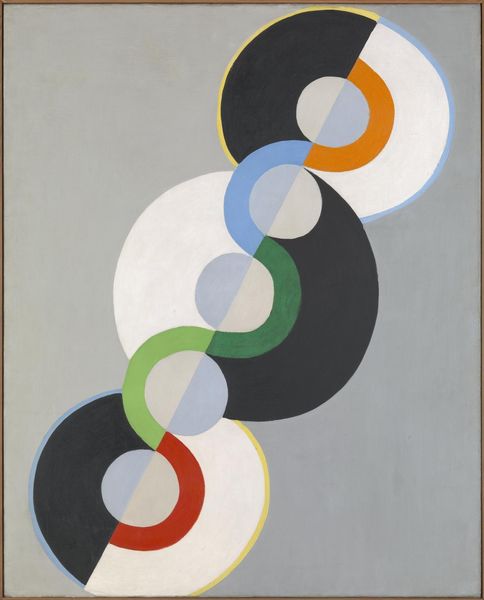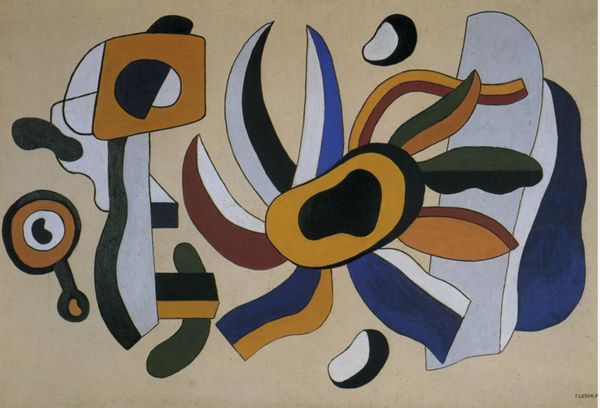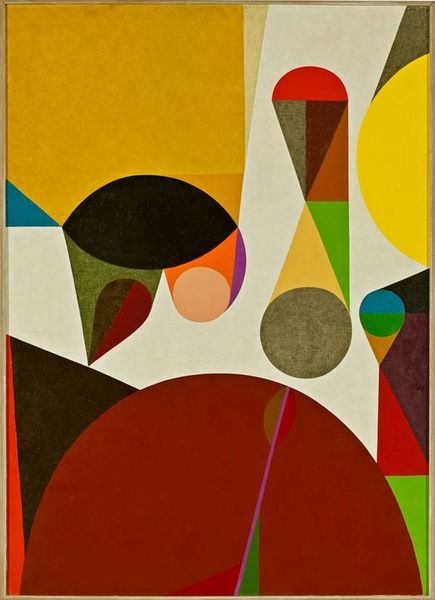
Copyright: Public domain US
Editor: This is Erich Buchholz's "Abstract Composition," created in 1920 using acrylic paint. It feels like a playground of shapes, with circles and squares just bouncing off each other. How do you interpret this work? Curator: Immediately, I'm struck by the circular motif, an almost Ouroboros quality, where the serpent eats its own tail, an ancient symbol of cyclicality and rebirth. Notice how these fragmented geometric forms also mimic architectural blueprints, hinting at the rapid urbanization and rebuilding happening after World War I. What do these color choices evoke for you? Editor: The blues and pinks are pretty calming, despite all the sharp angles. Is there a connection between the calmness and the rebuilding? Curator: That is perceptive. These pastel tones may represent an attempt to find harmony and create order amidst the chaos of the post-war era. Look closely at the line work; thin and bold lines are together, maybe a call back to a time before complete disruption. The juxtaposition could reflect a yearning for the past alongside the push towards a new future. What about the central white stripe--what could that suggest? Editor: A new beginning? A blank slate? Curator: Perhaps! Or a tear that demands mending. Symbols work in a system and often are up for grabs when we're actively working to make them our own. Considering that Buchholz was part of the November Group, a group of radical socialist artists in Germany, it seems possible this artwork communicates a utopian vision being pieced back together through simple shapes, expressing hope in abstraction after devastation. Editor: Wow, I never thought there could be so much history and symbolism packed into what seemed like simple geometry. Curator: Precisely. The power of abstraction lies in its capacity to speak to our collective unconscious through elemental forms, carrying forward memories and aspirations in unexpected ways.
Comments
No comments
Be the first to comment and join the conversation on the ultimate creative platform.
